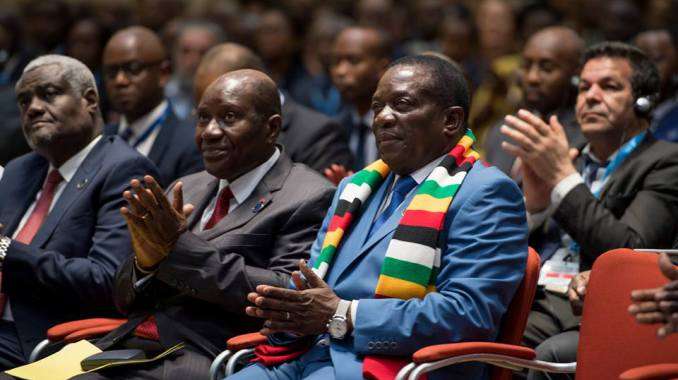Zimbabwe is drafting a raft of new policies aimed at strengthening the country's industries, a senior government official has said.
Abigail Shoniwa, the permanent secretary in the ministry of Industry, yesterday told delegates attending the second CBZ International SMEs Indaba in Bulawayo that the new policies "will speak to business growth".
"If we are to succeed in the global economy we must support our entrepreneurs, innovators and small to medium enterprises," she said.
Shoniwa further indicated that the proposed policies also seek to consolidate macro-economic gains that have been achieved so far in the form of stable prices, restored industrial production and improved business confidence.
Zimbabwe's industries are currently battling foreign currency shortages, old and inefficient equipment, high power and production costs and general lack of capital for recapitalisation.
This has resulted in the country becoming a supermarket for competitively priced foreign goods, particularly from South Africa.
African Union heads of state this week signed a crucial free-trade treaty, which rating agency Moody's Investor Services said could improve the region's credit profile.
In its report titled Sovereigns — Africa, Intra-regional trade can promote growth, but infrastructure and non-tariff barriers limit upside, Moody's managing director for credit strategy and the report's co-author, Colin Ellis said countries with larger manufacturing bases, such as South Africa, Kenya and Egypt, were more likely to benefit.
"There is significant potential for further trade integration in Africa, which the African Continental Free Trade Area (AfCFTA) could stimulate.
"This could improve the region's credit profiles, given the greater stability and sophistication that intra-regional trade could offer compared with traditional commodity exports to the rest of the world," he said.
"That said, countries with larger manufacturing bases and better infrastructure, such as South Africa and Kenya, are most likely to benefit from further integration.
"For others, poor infrastructure and non-tariff barriers will continue to restrict the trade sector's development and long-term growth potential."
At least 53 African heads of State — including President Emmerson Mnangagwa — gathered in Kigali for the 10th Extraordinary Summit of the AU to consider the legal instruments of AfCTA and also launch the agreement officially to establish the treaty.
AfCTA is aimed at deepening African economic integration, promoting agricultural development, food security, industrialisation and structural economic transformation through single-air continental transport market with free movement of persons, capital, goods and services.
It could boost intra-regional trade, which remains much lower compared to developing countries in Asia.
Intra-African trade has increased in recent years to 15 percent of total trade from 11 percent in 2008, but overall levels remain lower than those recorded by other developing regions before the global financial crisis.
African exports to the rest of the world are largely undiversified and are heavily oriented towards raw materials.
By contrast, exports between African countries contain more value added products.
Ellis noted that continued growth in intra-regional trade could help to reduce growth volatility and develop the region's local economies, which would in turn increase demand and investment in trading sectors.
He said one of the key barriers to the growth in regional trade is the lack of quality infrastructure.
Between 2007 and 2016, African countries that made the most improvements to their infrastructure also experienced the highest export growth.
In addition, Ellis said that non-tariff barriers, such as corruption, ineffective customs documentation and broader procedure, remain problematic in Africa.
According to World Bank estimates, costs for intra-African trade are the highest among developing regions, and around 50 percent higher than in East Asia.
- The Financial Gazette
 Concern over Masvingo black market
Concern over Masvingo black market  Kenya declares three days of mourning for Mugabe
Kenya declares three days of mourning for Mugabe  UK's Boris Johnson quits over Brexit stretegy
UK's Boris Johnson quits over Brexit stretegy  SecZim licences VFEX
SecZim licences VFEX  Zimbabwe abandons debt relief initiative
Zimbabwe abandons debt relief initiative  European Investment Bank warms up to Zimbabwe
European Investment Bank warms up to Zimbabwe  Young Investment Professional (YIP) Graduate Programme 2019
Young Investment Professional (YIP) Graduate Programme 2019 











 Young Investment Professional (YIP) Graduate Programme 2019
Young Investment Professional (YIP) Graduate Programme 2019
Editor's Pick